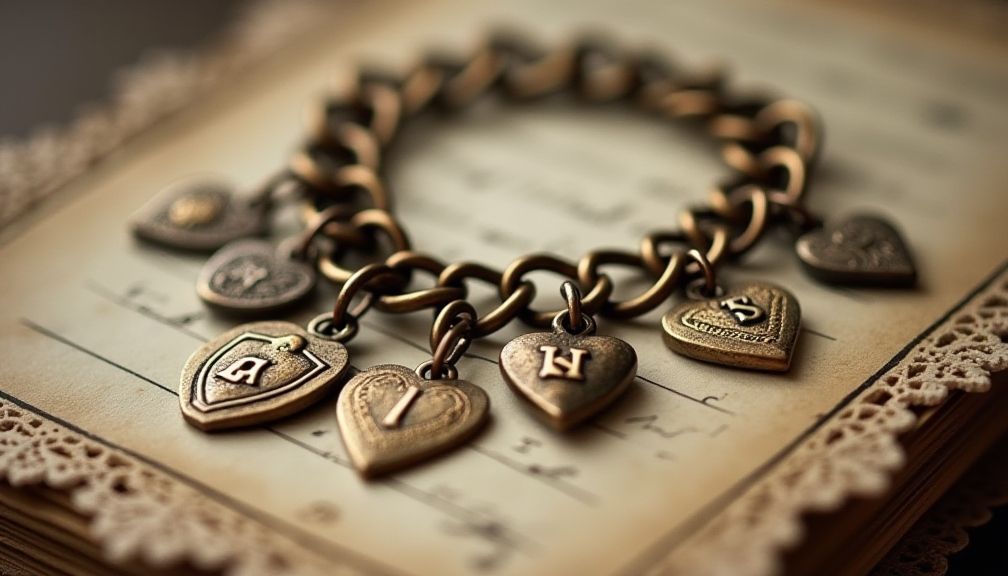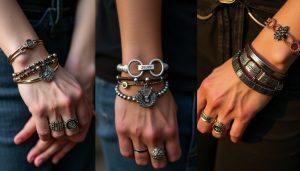The charm bracelet is a timeless accessory that transcends generations, capturing personal stories and sentiments through unique charms. But have you ever wondered who invented the charm bracelet and what sparked its widespread popularity? This article delves into the intriguing history of charm bracelets, exploring their origins, evolution, and why they have remained a beloved piece of jewelry.
The Origins of the Charm Bracelet
The concept of charm bracelets can be traced back to ancient civilizations. The earliest known charm bracelets appeared in Egypt around 5,000 years ago. These ornaments were often made from materials like gold and silver, featuring amulets or charms that signified protection or blessings from the deities. The use of symbolism in these charms provided a substantial emotional connection for the wearer.
In ancient Rome, soldiers would often wear charms that represented their family or home. This served as a reminder of their loved ones during times of war, fostering a sense of safety and comfort. Similarly, in different cultures, jewelry adorned with charms was often linked to spiritual beliefs and traditions.

The Evolution Through the Ages
As history progressed, charm bracelets evolved significantly. In the Middle Ages, European nobility adorned themselves with charm bracelets that showcased intricate designs and precious gems. These pieces were often used as a display of wealth and power, illustrating the owner’s social status.
The Victorian era marked a pivotal point in the charm bracelet’s journey. During this time, the idea of sentimental charm bracelets came into play. Many Victorian charm bracelets featured charms that symbolized love, loss, and remembrance. They were often given as gifts between loved ones, creating an emotional bond.
The Modern Resurgence
Fast forward to the 20th century, where charm bracelets experienced a major resurgence in the 1950s. Following the Second World War, charm bracelets became widely popular amongst women. This popularity was fueled by celebrities and cultural icons who sported them, elevating the charm bracelet to a status symbol.
Brands like Pandora and Thomas Sabo revolutionized the charm bracelet market, introducing customizable options. This innovation allowed wearers to add personal touches, transforming their bracelets into a unique testament of their life stories. With this newfound personalization, charm bracelets began to represent individual experiences, passions, and milestones.
Who is Credited with the Invention?
While it’s clear that charm bracelets have ancient origins, pinpointing a single inventor is challenging. Instead, many cultures contributed to the development of charm bracelets. However, in the contemporary context, one brand stands out: Pandora. Founded in 1982 by Danish goldsmith Per Enevoldsen and his wife Winnie, Pandora popularized the modular charm bracelet concept.
Pandora aimed to create an affordable luxury accessory that would allow people to express their individuality. The brand’s customizable charm bracelet became a global phenomenon, encouraging wearers to curate their collection of charms, each with a significant personal meaning.
The Motivation Behind Charm Bracelets
So, why did charm bracelets resonate so deeply with wearers throughout history? The charm bracelet serves as a vessel for personal stories; each charm encapsulates a memory, sentiment, or belief. This aspect of personalization fosters a connection that mass-produced jewelry cannot replicate.
Moreover, charm bracelets inherently promote creativity. Wearers can mix and match various charms, expressing their style and personality. They can also swap charms out seasonally or as life events unfold. This versatility enhances the charm bracelet’s appeal, making it a dynamic addition to any jewelry collection.
Significance of Charms
Each charm carries its significance, often linked to pivotal moments in the wearer’s life. For example, a graduation cap charm symbolizes academic achievement, while a heart charm may reflect love. This ability to showcase milestones visually and tangibly makes charm bracelets a cherished gift for birthdays, anniversaries, and other special occasions.
Further Reading:
The charm’s design can also contribute to its meaning. For example, a travel-themed charm can evoke memories of adventures, while a family-related charm might represent cherished moments spent with loved ones. This storytelling aspect enhances the charm bracelet’s role in the wearer’s life.
Charm Bracelets Around the World
Charm bracelets are not limited to Western culture. Across the globe, various cultures embrace this form of jewelry. In Italy, for instance, traditional charm bracelets often feature charms that reflect Italian heritage and values. In the Middle East, charm bracelets may be adorned with symbols of protection from the evil eye.
In South Asia, charm bracelets called “bichuas” are popular among newly married women, often featuring intricate designs that hold cultural significance. The charm bracelet is a versatile accessory that seamlessly adapts to different traditions and styles, showcasing its universal appeal.

DIY Charm Bracelet Ideas
A charm bracelet can also be a personal DIY project, allowing individuals to curate their own unique styles. Creating a charm bracelet by hand adds a special touch that mass-produced items often lack. Here’s how you can start your own DIY charm bracelet.
1. Choose Your Base: Start with a simple chain bracelet or a leather cord, depending on your preferred style.
2. Select Charms: Look for charms that resonate with your interests, memories, and beliefs. Consider browsing online shops, local artisan markets, or even creating charms yourself.
3. Arrange Your Design: Lay out your charms in your desired sequence, experimenting with colors and styles before finalizing your design.
4. Assemble: Attach your charms to the bracelet using jump rings. Ensure they are secure and won’t easily fall off.
5. Wear with Pride: Your personalized charm bracelet is now ready to be showcased! Share your story through your unique accessory.
Conclusion
From ancient Egypt to modern-day fashion statements, the charm bracelet has a rich and diverse history. While no single inventor can claim the charm bracelet, cultural influences from across the globe have shaped its evolution into the beloved piece of jewelry it is today. The charm bracelet’s ability to encapsulate personal stories, promote creativity, and celebrate significant life moments ensures its enduring popularity. Whether you’re wearing an ancestral charm bracelet or creating a new one, it remains a beautiful way to express your individuality and honor your life’s experiences.








